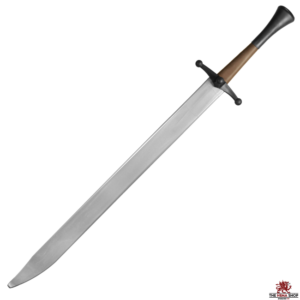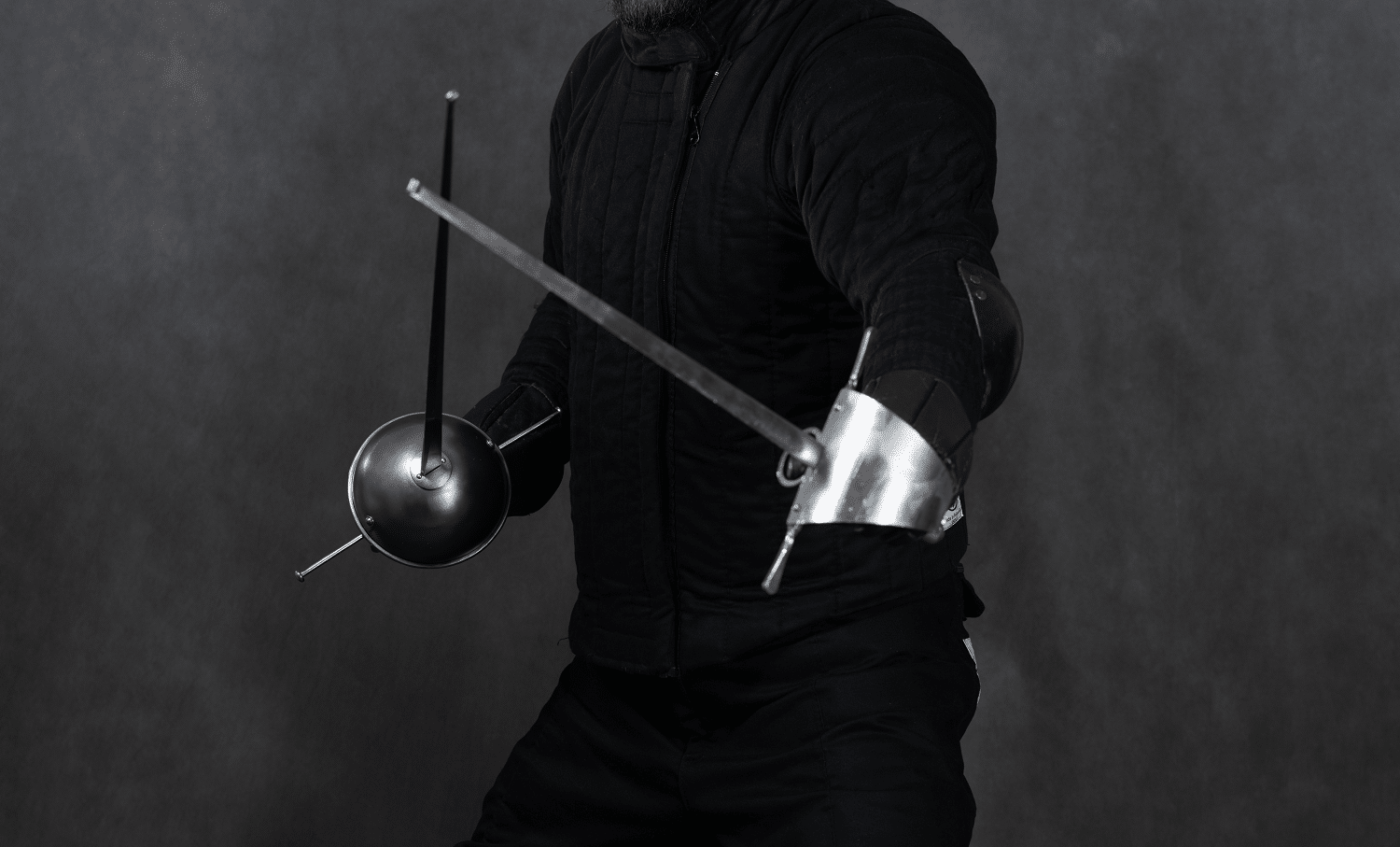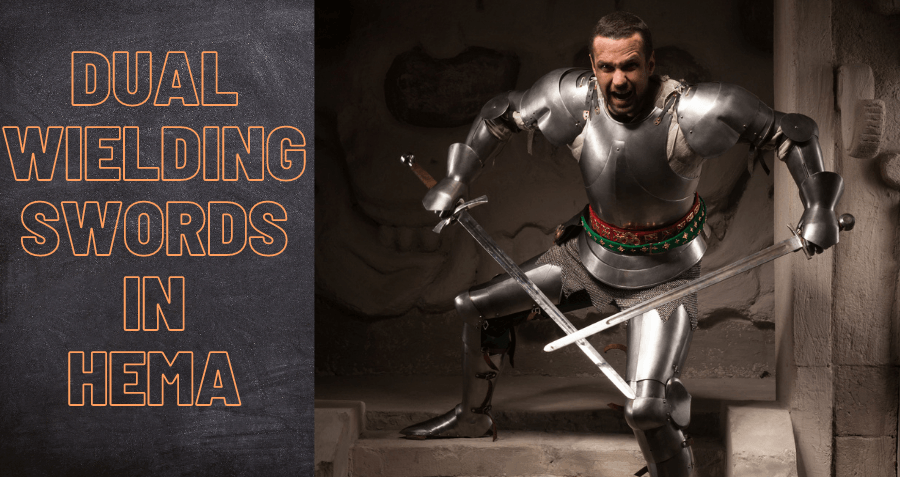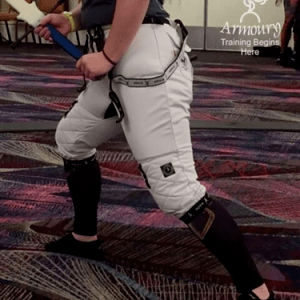Within HEMA, or Historical European Martial Arts, there are many kinds of sword fighting styles studied by historical fencing enthusiasts. The long sword and the rapier are the two best known swords but the messer has also become very popular due to its presence in several German Renaissance sword fighting manuscripts, particularly those which are part of the tradition of Johannes Liechtenauer, which is also called Kunst Des Fechtens (KdF). The term ‘Messer’ for this type of sword is also used interchangeably with the name ‘dussack’ (also spelled as dusack) although it should be noted that dussack can also be applied to a later style of sword. The term ‘hanger’ is also sometimes applied by historians to messers although this is an anachronism; “hanger” being a term used to describe types of cutlasses during the 18th and 19th century.
The lange messer (meaning “long knife”) or Großes Messer (“big knife”) is a sword of medieval German origin that is closely related to the French falchion, and essentially describes the same weapon although within HEMA the German terms are predominantly used due to the popularity of the study of German source material for this weapon. The messer likely descended from the bauernwehr (“peasant’s sidearm”) that arose in the early 13th century. It was also sometimes called the dusack or dussack, from the Czech tesák meaning “fang”. With an often curved, single-sided blade just under a meter in length the lange messer is a versatile, trusted, and ever-present weapon among the German middle class from the 14th through the 16th century. The messer sword endured for nearly three centuries as the go-to sidearm of the German citizenry, and despite misconceptions from appearances in popular media is considered to have been more common than long swords due to their cheaper cost to construct, making them a more affordable option for a sword.
Here are some styles of messer sword trainers used in HEMA.
On our Path of the Sabre page we list several historical sources that instruct in the usage of the messer sword, as messer fencing is directly related to fencing with the better known military sabre.
A General Description of the Lange Messer Sword
The messer has a curved blade, although the amount of curvature varies widely. Only the front edge of the messer is typically sharpened. The lange messer usually has a straight hilt with a handle sized for accommodating one handed or or two handed grips. The handle of a messer is constructed more similarly to a knife, with the tang sandwiched between two pieces of wood called grip plates. These plates are then pinned together in at least two places. With a blade that is shorter than a long sword the lange messer was more maneuverable in close quarters. It weighed two to two and a half pounds, making it heavier and therefore more durable than many other kinds of weapons.
Let’s talk briefly about the history of the messer.
The Lange Messer: A Short History of the People’s Sword

The lange messer sword is sometimes erroneously claimed to be based on Indian or Hungarian curved blades appearing in the same time frame, with the common claim being influence from Turkic kilij and Mongolian ild, both being curved swords used throughout the Middle Ages. This claim is erroneous because it is based in the factually incorrect belief that single edged curved blades were not used previously by European peoples and would have needed to be introduced from the East. Yet it is far more likely the messer is the result of several developments in European weapon-smithing taking place since ancient times. The lange messer is much more likely to have descended from the falcata, a type of bronze or iron bladed sword that originated in the ancient Iberian peninsula and was also used by Hannibal’s Carthaginian troops during the Second Punic War. The falcata later became adopted by the Romans themselves. Even prior to this the Greeks were also known to use the makhaira, a slimmer single edged bronze bladed sword which is very similar to the later seax used by Germanic peoples.
These ancient single edged sword blade styles made from bronze or iron are far more likely to be related to the development of messers in Europe than curved Eastern swords given these ancient European swords have similar shapes to the differing styles of steel bladed messers which later appeared during the Middle Ages.



The steel bladed lange messer (“long knife”) developed early sometime in the middle ages. This weapon is also known as a bauernwehr (“peasant sidearm”). One of the oldest mentions of messer type swords appears in the Pol Hausbuch (MS 3227a) which shows this style was in usage at least around the time of the entries related to messers being written.
The lange messer’s larger variant, the grosse messer (“great knife”), was a two-handed cut-and-thrust weapon generally measuring over 42 inches, with some versions even called Kriegsmesser (“war knife”). Much heavier than other messer types this is believed to have originated during the late 14th century in what is now northern Germany. The grosse messer was used by the lower classes and nobility alike for warfare.
The lange messer represented a compromise between length, weight, and construction expense. It was heavy enough to maximize slashing potential yet short enough to be mass produced at a reasonable cost. Its length also allowed for it to be wielded both on horseback and in close quarters combat. Because of these features, the lange messeer was among the most prolific and versatile weapons in the history of the Holy Roman Empire. It’s main limitation is that it lacks a sharpened edge on the back of the blade, limiting the effectiveness of techniques delivered with that unsharpened edge (which a longsword can perform) and that its lack of an accentuated point (such as what a longsword has) makes it far less effective against plate armour as it cannot be used to penetrate weak areas the way that a long sword can do. However given that the vast majority of foot soldiers in a battlefield would not be dressed in a suit of plate armour and that other weapons such as polearms are very effective against plate armour this was likely irrelevant for foot soldiers, making the messer a far more cost effective choice for equipping a large military force as they take less effort to construct than long swords do.
The messer sword was so ubiquitous that it appears in several surviving fechtbücher (fencing and combat manuals) produced in the 14th through 16th centuries. By the 16th century it became so established in the German arsenal that it was considered both a training and a standard military weapon for foot soldiers.
By the early decades of the 17th century, the lange messer was more commonly called the dusack, a moniker which endured as the sword evolved into the late Renaissance backsword, the long saber and the increasingly pervasive cavalry swords of the early modern era.
Famous Examples of the Lange Messer
The messer is not thought to have been a weapon as highly prized as a double bladed longs word, as messers require less time to construct compared to a long sword. While the bourgeoisie often could not afford special adornments for their weapons, there are some surviving messer examples with intricate designs, inscriptions, and other stylizations. One particularly notable example is believed to date between 1500 and 1515. Emblazoned on the blade are Saint Catherine and Saint Barbara, the patron of armorers and soldiers.
The hunting sword of the Holy Roman Emperor Maximillian I is a late and very ornate example of the lange messer with a unique triangular point similar to a long sword. Called a Kriegsmesser (“war knife”), this highly decorated example is thought to have been used by Maximillian during the hunting of boar. Its ornate crossbar is of twisted metal, while the handle is composed of silver, bone, pearl, leather and varnished wood. The sword as a whole is brass gilt with several inscriptions imploring the protection of the Blessed Virgin Mary in German and Latin. Maximillian also had less ornate messers made and worn by his soldiers.
*****
We hope this guide helps you start your journey into learning historical sword fighting with messers, dussacks and other similar swords.
If you’d like to learn more information about historical fencing practices please check out our Learn HEMA page for a guide to learning about the historical weapon that interests you. You can also find more guides we’ve written about other topics at our Helpful Guides page. You can also join the conversation at our forums.




















2 Responses
I have heard that the Messer was so popular in part because of sumptuary laws that barred peasants from carrying swords. since the messer “counted as” a large knife rather than a sword, it allowed commoners to carry a sidearm without technically breaking the law. is there any truth to that?